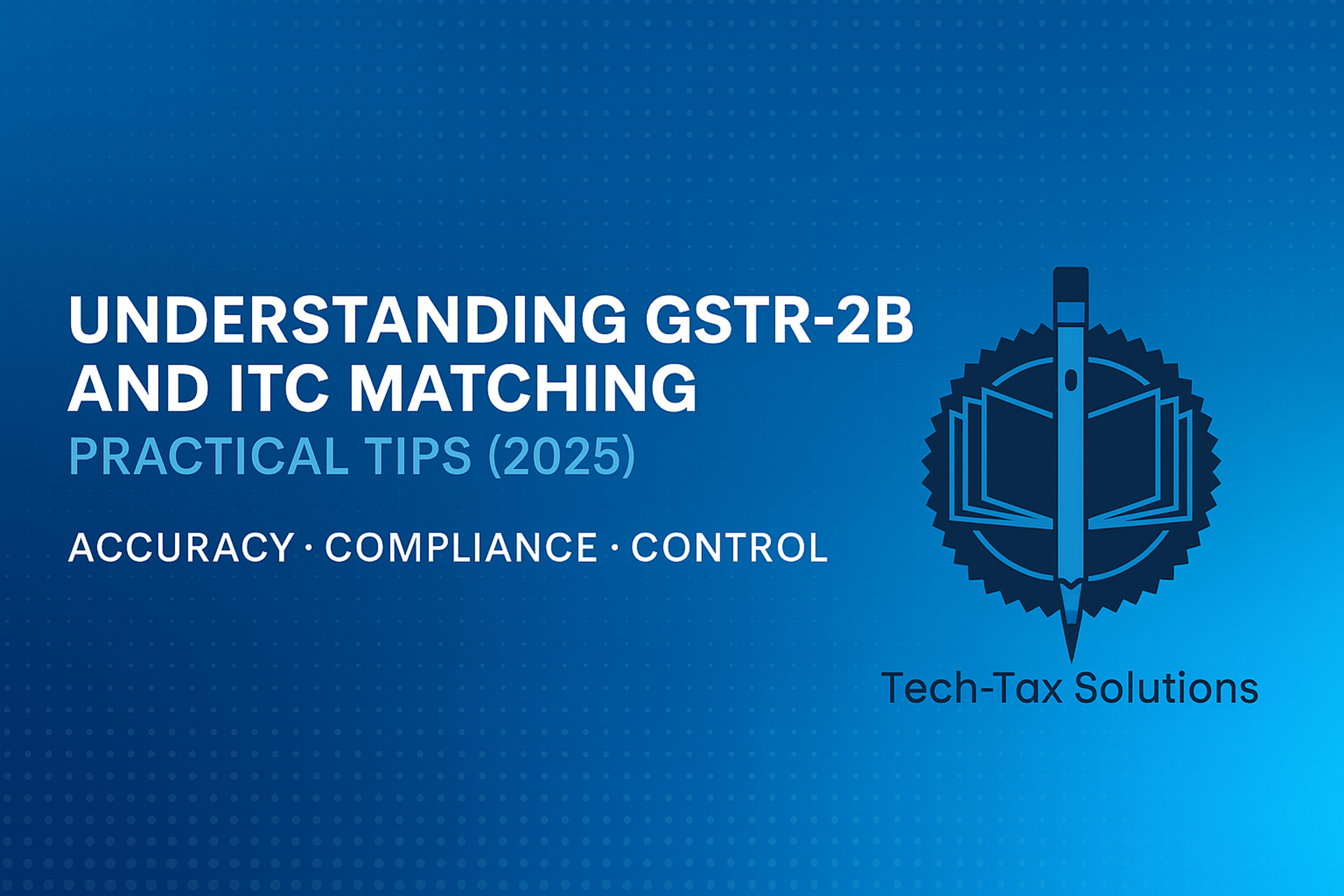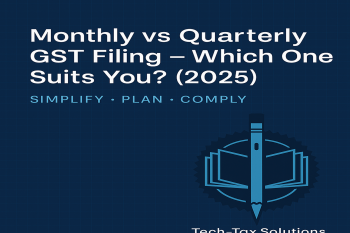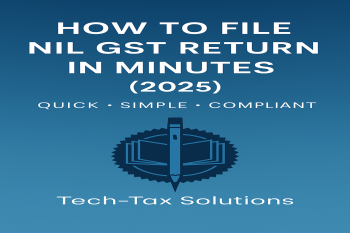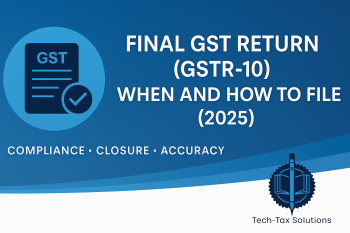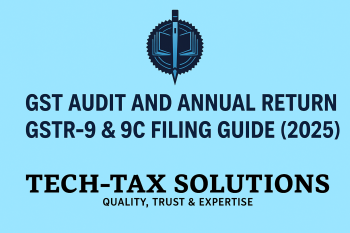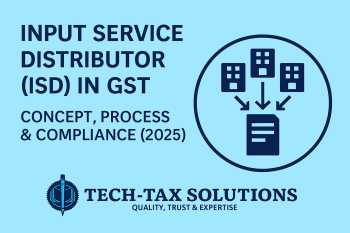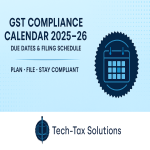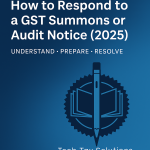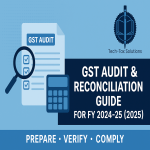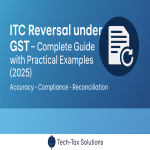🔹 Introduction
Accurate Input Tax Credit (ITC) claims are the backbone of GST compliance for every business. However, due to frequent mismatches between supplier data and buyer records, ITC verification has become a key area of scrutiny by tax authorities.
To streamline ITC reconciliation, the GST Network (GSTN) introduced GSTR-2B, a static monthly statement auto-generated for every registered taxpayer. GSTR-2B reflects the eligible and ineligible ITC for a particular month based on suppliers’ GSTR-1, GSTR-5, and GSTR-6 filings.
This article explains what GSTR-2B is, how ITC matching works, and practical steps businesses should follow to ensure 100% accurate ITC claims — thereby avoiding notices and financial losses.
🔹 Legal Framework
The concept of GSTR-2B and ITC eligibility arises under the following GST provisions:
-
Section 16 of the CGST Act, 2017 – Conditions for availing Input Tax Credit.
-
Section 38 (as substituted by Finance Act, 2022) – Communication of inward supplies and ITC details.
-
Rule 36(4) of the CGST Rules, 2017 – Restriction on ITC availment to invoices uploaded by suppliers.
-
Rule 60(7) – Generation of GSTR-2B statement.
-
CBIC Circulars & Press Releases (2020–2024) – Clarifications on ITC matching and GSTR-2B accuracy.
📘 Objective:
To ensure that taxpayers claim ITC only on invoices that have been properly uploaded and furnished by suppliers in their GSTR-1.
🔹 What is GSTR-2B?
GSTR-2B is a static auto-drafted ITC statement generated monthly for every GSTIN, based on data furnished by suppliers.
It contains:
-
✅ Eligible ITC – Credit that can be claimed in GSTR-3B.
-
🚫 Ineligible ITC – ITC blocked due to time limits, supplier non-filing, or nature of supply.
📅 Availability:
GSTR-2B is generated on the 14th of every month (after suppliers file GSTR-1 by 11th).
🔹 Step-by-Step: How ITC Matching Works
✅ 1. Supplier Uploads Invoice in GSTR-1
The supplier declares outward supplies in GSTR-1.
🔄 2. Data Flows into Recipient’s GSTR-2B
GSTN auto-populates the buyer’s GSTR-2B based on suppliers’ filings.
🔍 3. Buyer Verifies GSTR-2B vs. Purchase Register
The buyer compares invoices appearing in GSTR-2B with their books.
💰 4. ITC Claimed in GSTR-3B
Only eligible ITC appearing in GSTR-2B should be claimed in GSTR-3B.
⚠️ 5. Mismatch Alert
If supplier hasn’t uploaded an invoice, ITC won’t appear in GSTR-2B — triggering an ITC mismatch alert under the Invoice Management System (IMS).
🔹 Practical Example
Example:
ABC Enterprises purchased goods worth ₹5,00,000 + GST ₹90,000 from XYZ Pvt. Ltd. in June 2025.
XYZ forgot to file GSTR-1 for June.
👉 Result:
-
Invoice not reflected in ABC’s GSTR-2B.
-
ITC of ₹90,000 cannot be claimed in June GSTR-3B.
-
Once XYZ files GSTR-1 in July, ABC can claim ITC in July 2025 return.
🔹 Common ITC Mismatch Reasons
|
🔹 Practical Tips for Accurate ITC Matching
🧾 1. Monthly 3-Way Reconciliation
Reconcile Purchase Register vs. GSTR-2B vs. GSTR-3B each month before filing.
📌 2. Automate with GST Software
Use tools that integrate with GSTN APIs to automate invoice matching and alert generation.
📧 3. Communicate with Non-Compliant Suppliers
Regularly monitor supplier compliance score and block non-filers from new purchases.
🧮 4. Track ITC Carry-Forward
Maintain a ledger of ITC deferred due to missing invoices and claim once reflected.
⚖️ 5. Maintain Proof of Reconciliation
Download GSTR-2B monthly and preserve for audit or departmental verification.
🔹 Best Practices
✅ Claim ITC only on invoices visible in GSTR-2B.
✅ Avoid manual ITC adjustments unless verified.
✅ Review blocked credits under Section 17(5).
✅ Conduct quarterly internal ITC audits.
✅ Use digital tools like Excel-based trackers or reconciliation dashboards.
🔹 FAQs
Q1. Can ITC be claimed if the invoice is not in GSTR-2B?
➡️ No. ITC can be claimed only when the invoice appears in GSTR-2B, as per Rule 36(4).
Q2. What if the supplier uploads the invoice next month?
➡️ You can claim ITC in the subsequent month’s return when the invoice appears in your GSTR-2B.
Q3. Is GSTR-2B auto-updated?
➡️ No. GSTR-2B is a static statement — it does not change after the 14th of each month.
Q4. What’s the difference between GSTR-2A and GSTR-2B?
➡️ GSTR-2A is dynamic (changes when suppliers update data), while GSTR-2B is static (locked monthly snapshot).
Q5. How can Tech-Tax Solutions help?
➡️ We offer professional ITC reconciliation and GSTR-2B audit services to ensure accurate and compliant GST filings.
🔹 Conclusion
Proper ITC management through GSTR-2B reconciliation is vital to safeguard working capital and stay GST-compliant.
By regularly matching supplier invoices, monitoring GSTR-2B, and using automated reconciliation tools, businesses can avoid ITC reversals, penalties, and interest liability.
📌 Partner with Tech-Tax Solutions to ensure 100% ITC accuracy, automated matching, and expert support in GST compliance.
